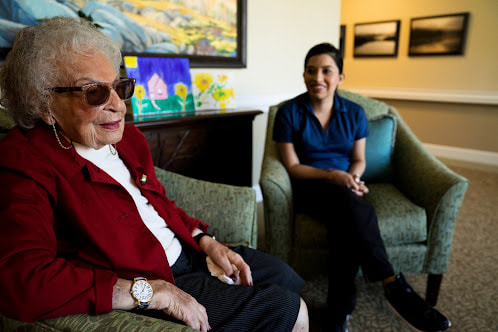Technology is everywhere—smartphones, tablets, video calls, social media—and while it offers countless benefits, it can also feel overwhelming, especially if it’s not something you grew up using daily. The good news? Embracing technology doesn’t mean diving into every new app or learning complex programs. It’s about finding simple, useful tools that make life easier in assisted living and more enjoyable.
In retirement homes Glendale, residents are discovering that technology can help them stay connected, entertained, and informed—all without feeling stressed or overloaded.
Start with What Matters Most to You
The key to feeling comfortable with technology is starting with something that adds value to your daily life. Ask yourself: What would make my day easier or more enjoyable?- Want to see grandkids more often? Learn video calling apps like Zoom or FaceTime
- Love reading? Explore e-reader apps like Kindle or Libby for thousands of books.
- Interested in exploring hobbies? Platforms like YouTube offer endless free tutorials, from gardening tips to painting classes.
Stick to User-Friendly Devices and Apps
Not all technology is complicated. Some tools are designed with simplicity in mind, making them perfect for seniors. Tablets, for example, offer large screens and intuitive touch controls, making browsing the internet or reading emails feel natural.Apps that are known for their easy interfaces include:
- WhatsApp for messaging and video calls.
- Spotify for listening to music or podcasts.
- Pinterest for browsing recipes, craft ideas, or travel inspiration.
Take It One Step at a Time
Trying to learn too many new things at once can be overwhelming. Focus on mastering one device or app before moving on to the next. Break it down into simple steps—like learning how to send a photo before tackling video calls.If you get stuck, don’t hesitate to ask for help. In senior living Glendale AZ, many communities offer peer-to-peer tech support groups where residents teach each other tips and tricks in a relaxed setting.
Use Technology to Stay Connected
One of the biggest benefits of tech is its ability to bridge distances. Whether it’s video chatting with family, playing online games with friends, or joining virtual hobby groups, technology can make it easier to stay social and engaged.If social media feels overwhelming, choose platforms that are more focused on family and friends, like Facebook, and avoid apps that constantly bombard you with notifications.
Embracing technology doesn’t have to be stressful. With patience, curiosity, and the right support, it can become a powerful tool for connection, creativity, and convenience—on your own terms.









.jpg)

